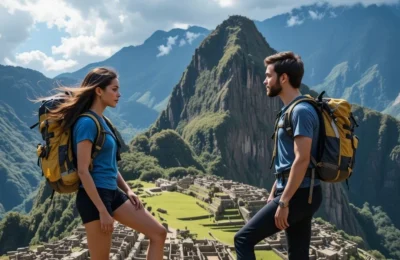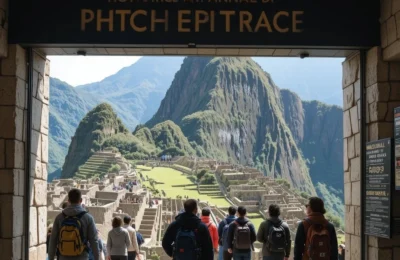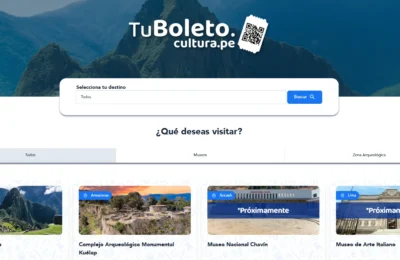The Best Photos of Machu Picchu | Classic spots and hidden gems to capture this Wonder
Machu Picchu is not just a tourist destination—it’s a photographer’s paradise, where every corner tells a story. Nestled among mountains and clouds, this world wonder offers endless opportunities to capture the best photos of Machu Picchu. But how do you go beyond the typical postcard shots and take pictures that truly convey its magic?
In this guide, with Kantu Peru Tours, we’ll reveal the best viewpoints, ideal moments, and professional techniques to make your Machu Picchu photos stand out among thousands. From classic shots to secret corners, get ready to explore the Inca city with your camera!
Recommended Photography Gear
To capture Machu Picchu’s grandeur, you’ll need the right equipment. Here are the options based on your photography level:
→ Cameras: From smartphones with manual mode to DSLR or mirrorless cameras (like the Sony A7III or Canon R5).
→ Essential lenses: Wide-angle (10-24mm) for full landscapes, telephoto (70-200mm) for architectural details.
→ Key accessories: ND filters to balance harsh light and extra batteries (there are no outlets on the mountain).
→ Protect your gear: Waterproof cases + silica gel packs in your backpack. Humidity can ruin your equipment in minutes.
⚠️ Note: Machu Picchu’s 25 prohibited items include tripods, selfie sticks, and camera stabilizers.

Tourist taking a picture avoiding crowds in Machu Picchu
The 7 best spots for Machu Picchu Photos
Machu Picchu offers countless photographic perspectives, but these seven locations stand out for their unique angles—whether for their historical value, scenic beauty, or technical opportunities. Below, we detail each spot with practical tips for capturing the best shots.
1. Main Viewpoint (The Classic Shot)
Located in the upper part of the complex, this is where most visitors capture the iconic postcard view of Machu Picchu with Huayna Picchu in the background. To avoid crowds, arrive before sunrise (between 5:30 and 6:00 AM).
📌 Photography tip: Use a telephoto lens (70-200mm) to compress the perspective and emphasize the ruins against the mountain. For a unique composition, include grazing llamas to add life to the scene.

Pareja de novios en Machu Picchu
2. Sun Gate (Inti Punku) – The Perfect Sunrise
This ancient entrance to the archaeological site offers one of the most breathtaking views, especially at sunrise. Here, in the Sun Gate of Machu Picchu, sunlight filters through the mountains and gradually illuminates the citadel, creating a magical effect.
📌 Photography tip: Arrive at least an hour before sunrise to secure your spot. Shoot in manual mode to control exposure as light changes rapidly. A graduated neutral density (GND) filter can balance the bright sky with the darker terrain.

Huayna Picchu Photo from the sun gate route
3. Guardian’s Hut – Mist & Depth
Situated near the main entrance, the guardian’s house is an elevated structure that provides a panoramic view of the Inca terraces in the foreground. Early morning fog often envelops the landscape, adding mystery to your photos.
📌 Photography tip: Frame the shot with foreground stones to create depth. If there’s mist, set the white balance to “cloudy” to preserve warm tones.

Casa del Guardían de Machu Picchu foto postal
4. Hidden Stairway to the Sacred Rock
This less-traveled path leads to a ceremonial area, lined with stone stairs that blend seamlessly into the landscape. It’s perfect for leading-line compositions that draw the eye toward the mountains in the Sacred Rock.
📌 Photography tip: Use a wide-angle lens (16-35mm) to emphasize the stairs and surroundings. Shoot on a partly cloudy day to avoid harsh shadows.

Mujer cerca a la Roca Sagrada de Machu Picchu
5. Eastern Terraces – Textures & Patterns
The agricultural terraces on Machu Picchu’s eastern side are ideal for capturing geometric patterns and textures. With fewer tourists here, you can work at your own pace.
📌 Photography tip: Focus on stone details and use side lighting (mid-morning or late afternoon) to enhance shadows. Try black-and-white shots to emphasize textures.

A photo of Machu Picchu of a Couple next to the entrance
6. Temple of the Three Windows – Natural Frames
This iconic temple in the Main Plaza offers a perfect architectural frame for creative compositions. The three windows frame the mountain landscape, creating a symbolic image.
📌 Photography tip: Stand inside the temple and shoot outward, using the windows as a natural frame. Wait for a brief pause in foot traffic to get a clean shot.

Templo de las Tres Ventanas de Machu Picchu
7. Inca Bridge – A Path Over the Abyss
This ancient stone bridge in Machu Picchu, built into a cliff, is one of the least visited yet most photogenic spots. The contrast between the Inca structure and the deep valley makes for a powerful image.
📌 Photography tip: Use a wide-angle lens to capture the vast landscape. If you secure a drone permit (months in advance), this is a spectacular spot for aerial shots.

A-llama-in-Machu-Picchu
Machu Picchu postcard photo Circuit
To capture the classic image everyone recognizes, Circuits 2A and 2B are your best allies. Circuit 2A takes you directly to the Main Viewpoint, where you can photograph the full panorama with Huayna Picchu in the background. If you prefer a more relaxed exploration, 2B allows you to explore the urban area in greater detail, including the Temple of the Sun and the Main Plaza, before reaching the viewpoint. The choice depends on whether you want to climb to the Guardian’s House (2A) or delve deeper into your exploration (2B).

Machu Picchu Circuit 2 Map of the Designed Route
Capturing magical moments
→ Sunrise at Machu Picchu is a unique spectacle, especially between 5:30 and 6:30 AM, when the morning fog slowly dissolves, revealing the citadel in a soft golden light. This is the ideal time for dramatic, atmospheric photos. Plus, there are fewer tourists at this hour.
→ In the afternoon, during the “golden hour” (4:30 PM to 5:30 PM), the sun bathes Huayna Picchu in warm tones, creating a perfect contrast with the elongated shadows of the ruins. If the day is cloudy, don’t be discouraged—the diffused light enhances the stone textures and is ideal for high-contrast black-and-white compositions.

Sun Gate Route Maachu Picchu Circuit 1-C
Weather in Machu Picchu
The dry or high season (April to October) offers clear skies and intense light, perfect for vibrant photos of Machu Picchu with panoramic views. In contrast, the green or low season (November to March) transforms the landscape with mysterious mists and lush vegetation, ideal for ethereal, moody images. Each season provides unique opportunities, so plan your visit according to your preferred photographic style.

Key questions about Machu Picchu Photos
1. Can I use a drone in Machu Picchu?
No, drones are not allowed in any area of the Machu Picchu Sanctuary or its surroundings. This prohibition is strict and applies to all visitors.
2. What’s the best tour for photographers?
The best option is specialized photography tours, which offer small groups (max. 8 people), schedules tailored to ideal lighting (sunrise or sunset), and guides who know the less crowded yet photogenic spots, however keep in mind the 10 new circuits in Machu Picchu before buying your entrance ticket.
3. How can I avoid crowds in my photos?
Two effective strategies: enter with the first visiting shift at 5:30 AM and head straight to the Main Viewpoint, plan your trip for November, the month with the fewest visitors before the heavier rains begin.
4. Where are tripods prohibited?
Their use is completely restricted, according to Machu Picchu’s 25 Prohibitions.

A-woman-selfie-in-Machu-Picchu
Machu Picchu is a photographer’s dream come true, but it requires planning. Use Circuits 2A or 2B for the classic shot, take advantage of sunrise to avoid crowds, and capture unique textures with side lighting. Remember: no drones, protect your gear from humidity, and respect park rules. Each season offers distinct magic—choose the one that best suits your style. Now, all that’s left is to shoot, create, and forever preserve the essence of this Inca wonder. Happy travels and great photos!
If this blog inspired you to travel to Puno, leave us a 👍 like and share it with fellow adventurers! Still have questions about planning your trip to Peru? At Kantu Peru Tours, we’re happy to help! Ready for this adventure? Machu Picchu will leave you in awe! 🌿✨








